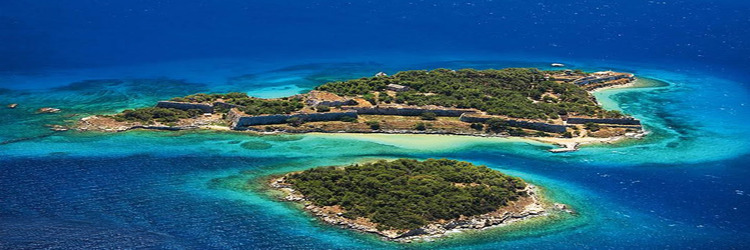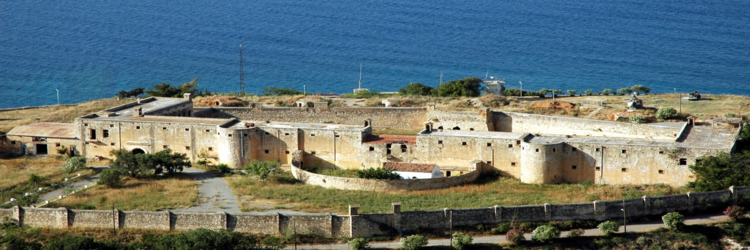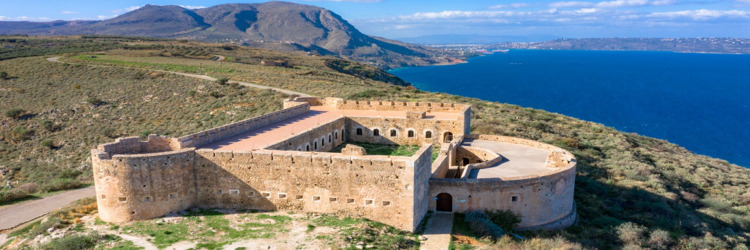SOUDA ISLET

At the entrance of Souda Bay, two uninhabited islets stand as guardians, the islet of Souda, to which it has given its name and another small island, Leon, almost round, located nearby and referred to in Venetian maps as “the Rabbit Island”.
The Venetians recognized the strategic position of the islet of Souda and in 1571 AD, they built there a strong fortification, the Fortezza, whose architect and supervisor of works was the fortification engineer Latino Orsini. They did the same thing in two other Cretan islands, Gramvousa of Chania and Spinalonga. As a result, when the Cretan War ended and Crete came under Turkish occupation (1669), the three islets remained in the hands of the Venetians until 1715, when the Turks took them by treaty. The islet is linked to the Cretan history and the struggles of the Cretans for their liberation, since in the period 1669-1715 the three islets were a shelter to many Christian fugitives from Ottoman Crete.
The Turks retained possession of the island until 1898.
On the island of Souda the Greek flag was raised for the first time on the 1st of February 1913 (before the official union of Crete with Greece).
IZZEDDIN FORTRESS

The Izzeddin fortress was the main fortification at the entrance of Souda Bay. It was built in 1872 by Rauf Pasha on the hill Kalami and was named after Izzeddine, son of Sultan Abdul Aziz. It was then used as a prison until 1974.
In its cells, powerful political figures of the early 20th century were imprisoned, such as Eleftherios Venizelos, Theodoros Pangalos, Manolis Glezos, etc. Some of the first political prisoners were executed there. The fortress has been declared a monument of cultural heritage and efforts are being made by the local government for its utilization.A
ANCIENT APTERA

On a small plateau on a hill opposite the islet of Souda, the ancient city of Aptera was built. It was one of the most important city-states of western Crete in antiquity.
The city was founded in the 8th century B.C. According to mythology, in ancient Greece, Aptera was a centre of musical arts, where there was an ancient temple dedicated to the Muses. One version of its naming states that in a singing contest held between the Muses and the Sirens, the latter lost, and out of sorrow, their wings fell into the sea (hence the name Aptera, meaning in Greek without wings ). The wings formed the two islets, which were named Lefkae (in Greek, white) due to the white colour of the wings (this is the islet of Souda and the small islet next to it called Leontas).
Aptera was built in a safe and strategic place, it had two ports, Minoa, nowadays called Marathi, and the port of Kissamos, nowadays called Kalyves, while its commercial traffic was so important that it had its own currency.
Apart from its particular fortification, excavations in the city have brought to light an ancient theatre, a necropolis, Roman cisterns and numerous artefacts, typical findings of the successive historical periods of Crete.
The city was finally abandoned in the 7th century AD, initially due to a powerful earthquake and then due to repeated Arab invasions.